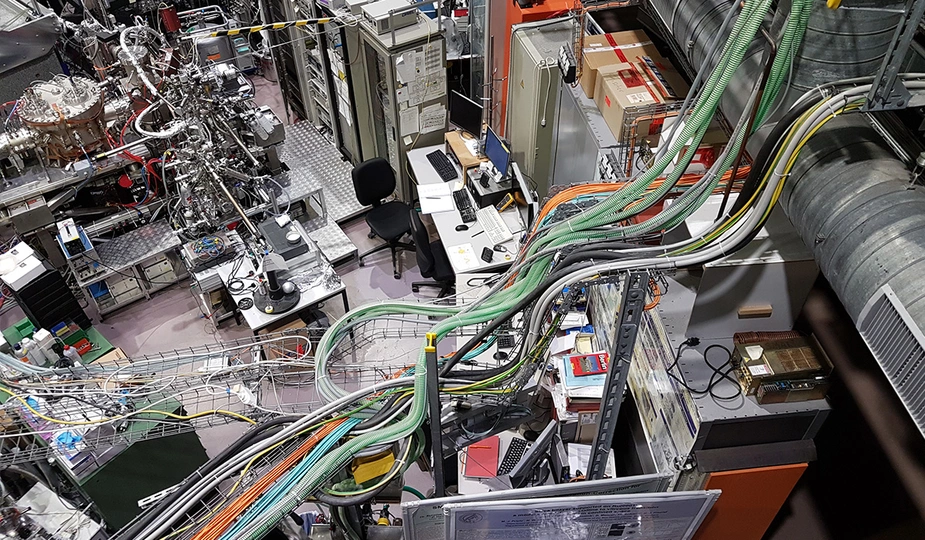Physicists develop "time machine" for materials research at Bessy II
About two million euros in funding from the Federal Ministry of Education and Research (BMBF) for the project
Researchers from Martin Luther University Halle-Wittenberg (MLU), Freie Universität Berlin and Technische Universität München will develop fast electronics for data acquisition at BESSY II. It will make it possible to record the signal of all X-ray flashes generated during the experiment. This will enable researchers to evaluate the data more extensively - even retrospectively. The Federal Ministry of Education and Research (BMBF) is funding the project with two million euros.
Many experiments in physics are time-consuming and expensive. Sometimes, however, you only notice at the end that you have actually set the wrong measurement parameters. How practical would it be to have a time machine with which one could jump to the beginning of the experiment and re-evaluate the data? The Researchers want to develop just such a machine for BESSY II at the Helmholtz Zentrum Berlin (HZB).
BESSY II is a research facility that is unique in Germany. It can be used to generate X-rays whose energy and polarization can be precisely adjusted. The heart of the facility is a particle accelerator that accelerates electrons to almost the speed of light. These electrons pass through a storage ring with magnets, which produces X-rays. "One can imagine the BESSY II storage ring as a camera with an extremely fast flash. The X-ray radiation is generated in pulses, so that experiments with a very high time resolution are possible," says physicist Prof. Dr. Georg Woltersdorf from MLU, who is leading the project together with Prof. Dr. Wolfgang Kuch from Freie Universität and Prof. Dr. Christian Back from TU Munich. Due to its special properties, the system is in great demand among materials researchers all over the world. Every year, more than 2,000 scientists use BESSY II for experiments.
One challenge is that the researchers have to determine in advance exactly which parameters are to be measured at which points in time. According to Woltersdorf, a small error in the question could, however, lead to the entire series of measurements achieving no or insufficient results. This is where the new project comes in: Fast electronics for data acquisition will make it possible to record and evaluate the signal of all X-ray flashes generated during the experiment. This produces several terabytes of data per hour.
"In this way, the newly planned setup can achieve much more than was previously the case. The measured data are immediately sorted by the electronics at the correct time. With the stored raw data, it is also possible to jump into the data at any time afterwards and use a new time grid," Woltersdorf continues. In order to be able to use this electronics sensibly, the researchers are also extending the VEKMAG experiment at BESSY II with a laser system that allows pulsed excitation of the samples to be investigated. In this way, the dynamics of matter can be investigated on the picosecond time scale. One picosecond corresponds to the billionth part of a second.
For the three project partners, this is not the first joint work on BESSY II. In recent years, scientists from Halle, Berlin and Munich have already set up the "VEKMAG" experiment at the synchrotron radiation source, a unique measuring station with which measurements at high magnetic fields and low temperatures are possible. The facility will be used, for example, to research new magnetic materials that could be used for long-term data storage.
